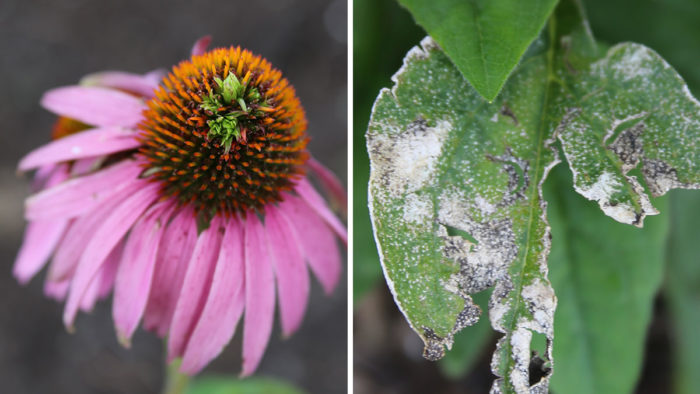
Several diseases and pests affect coneflowers. While your coneflowers may never get any of them, it can be troubling if they do.
Powdery mildew
This disease typically occurs in overly moist conditions or from a lack of airflow. Plants that are already weakened by pests or disease may be especially susceptible. Avoid powdery mildew by spacing plants properly and planting in well-drained soil.
Eriophyid mites
Floral damage caused by eriophyid mites mimics some of the symptoms of aster yellows (see below). In this case, the damage is only cosmetic and won’t affect the health of the plant, although it will reduce seed production. Mites feeding on the flowers cause tufted growth or rosettes to form on the cones. The deformed flowers are unsightly and similar in appearance to aster yellows. Removing the affected flowers will improve the ornamental display and reduce the mite population.
Japanese beetles
The beetles feed on foliage and flowers, leaving ragged holes behind. Fortunately, their damage is mainly cosmetic. Hand picking adult beetles and disposing of them works best.
 |
 |
Crown/stem rot
Normally resulting from overwatering (or from a plant being sited in an overly moist site), crown/stem rot results in the entire plant turning brown and essentially rotting away. Again, well-drained soil is key.
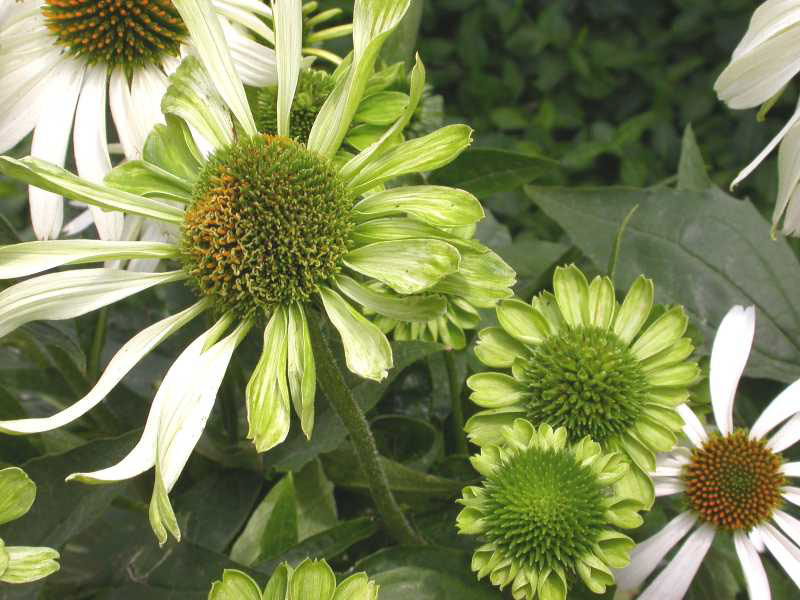
Aster yellows
This is perhaps the most grievous problem because there is no prevention or cure—all parts of the plant are infectious and potentially harmful to other plants. A specialized bacteria called a phytoplasma spreads from plant to plant by leafhoppers, which are sucking insects that feed on coneflowers. Disfigured and chlorotic leaves, stunted stems, and distorted flowers are symptoms of aster yellows. Affected flowers may also show green spoon-shaped rays and/or a rosette of leafy growth on the cones (photo). The phytoplasmas multiply in the roots over winter, so symptoms worsen every year. Sanitation is best as soon as symptoms appear—all parts of the plant, including the roots, must be destroyed.
See more about coneflowers in What’s New With Coneflowers?
Richard Hawke is plant evaluation manager at the Chicago Botanic Garden in Glencoe, Illinois.
Photos, except where noted: Danielle Sherry
Fine Gardening Recommended Products

Gardena 3103 Combisystem 12-Inch To 20-Inch Adjustable Metal Fan Rake Head
Fine Gardening receives a commission for items purchased through links on this site, including Amazon Associates and other affiliate advertising programs.
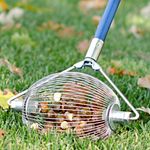
Medium Nut Wizard 14" for English Walnuts, Chestnuts, Golf Balls
Fine Gardening receives a commission for items purchased through links on this site, including Amazon Associates and other affiliate advertising programs.

Ho-Mi Digger - Korean Triangle Blade
Fine Gardening receives a commission for items purchased through links on this site, including Amazon Associates and other affiliate advertising programs.

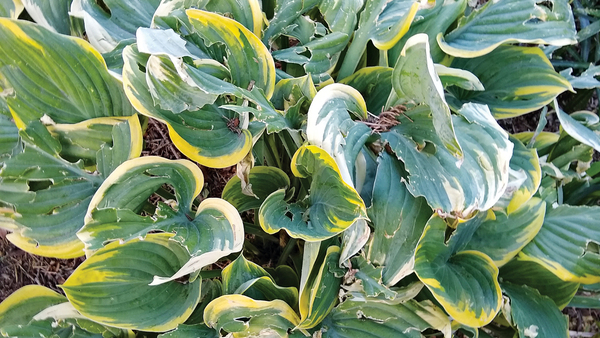
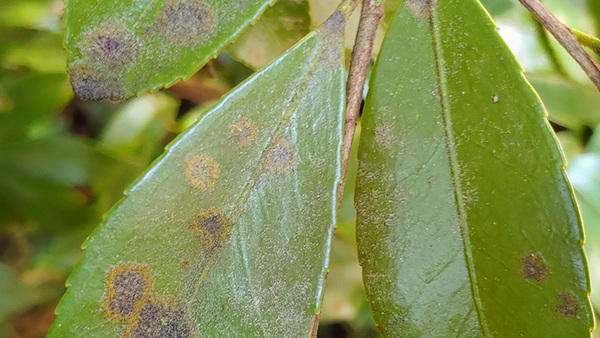















Comments
This feels like an unfinished article! Where's the picture of aster yellows? The article says that Eriophyid mites look like aster yellows (see below), but then there's a picture labeled Eriophyd mites (above, not below) and no picture of aster yellows. Why aren't there clear pictures of each disease or pest, located in the section describing the problem?
Log in or create an account to post a comment.
Sign up Log in